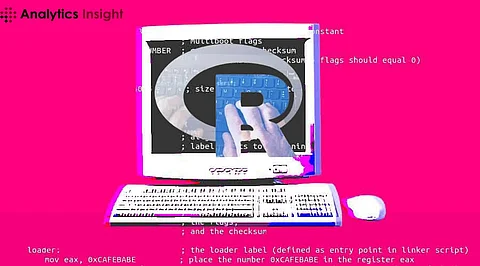
- Insights
- Cryptocurrencies
- Stocks
- White Papers
- Industry
- Geography
- Insights
- Cryptocurrencies
- Stocks
- White Papers
- Industry
- Geography


R programming has evolved into a formidable asset for statistical computing and data analysis. Crafted by statisticians and data scientists, R presents a diverse array of features tailored to data exploration, analysis, and visualization. Whether you're a novice or an adept analyst, mastering R can profoundly augment your capacity to extract insights from data.
From importing and cleansing datasets to performing state-of-the-art statistical analysis, R equips clients with the gear needed to get to the lowest of the complexities of data.
Additionally, R's strong graphical capabilities make it possible to create insightful visualizations that reveal hidden patterns and trends in datasets. R enables users to make decisions based solely on data-driven insights, whether they are analyzing trends in profit data or conducting speculation tests.
Individuals can unlock the full potential of their data, fostering innovation and driving success in a variety of fields, by embarking on the journey of mastering R programming for Statistical Computing.
R is a statistical computing and snapshot environment as well as an open-source programming language. It gives a rich arrangement of highlights and libraries for data control, factual assessment, and graphical perception. R is widely used in academia, research, and industry for information evaluation and statistical modeling due to its clear syntax and extensive documentation.
To begin the use of R, you may first want to put in the R software program on your PC. R is to be had for Windows, macOS, and Linux running systems and may be downloaded for free from the Comprehensive R Archive Network (CRAN) internet site. Once mounted, you could launch the R console or use an integrated development surroundings (IDE) together with RStudio for an extra person-pleasant experience.
R provides powerful tools for manipulating data, including functions for importing, cleaning, and transforming datasets. You can read data from various file formats such as CSV, Excel, and SQL databases using functions like `read.csv()` and `read. table()`. Once imported, you can use functions like `head()`, `summary()`, and `str()` to inspect the structure and summary statistics of your data.
R's significant series of statistical capabilities and programs, which offer a complete toolkit for records analysis, is a key electricity. Descriptive information, hypothesis checking out, regression evaluation, and system gaining knowledge are only some of the statistical methods that can be included in those applications.
For instance, the "summary()" function provides summary statistics for numerical variables, and the "t.test()" and "lm()" functions, respectively, make it easier to test hypotheses and model linear regression. With these flexible devices available to them, clients can productively direct many factual investigations, engaging them to determine significant experiences and pursue informed choices in light of hearty information-driven proof.
R offers strong perception capacities for making a large number of plots and diagrams. The ggplot2 bundle, specifically, is much of the time used for the creation of refined designs that can be modified. With ggplot2, you can easily create scatter plots, histograms, bar charts, box plots, and more with just a few lines of code.
After mastering the fundamentals of R, delving into advanced topics and techniques expands your analytical prowess. This entails handling large datasets efficiently, facilitated by packages like `dplyr` and `data. table`. Performing intricate time series analysis is made accessible through packages such as `xts` and `forecast`. In addition, the use of sophisticated machine learning algorithms is enabled by features such as `caret` and `randomForest`.
To maximize the benefits of R programming for statistical computing, adhering to best practices and conventions is essential. This entails crafting clean, readable code with meaningful variable names and well-documented comments. Putting together investigation into measured, reusable capabilities upgrades productivity and viability. Additionally, it is essential to keep up with the most recent R ecosystem developments. Consistently investigating new bundles, going to gatherings, and studios, and taking part in web-based networks empowers clients to stay current with arising patterns and strategies.
There are a number of sources for studying R programming for statistical computing. Structured getting to know paths are furnished via on-line tutorials, books, and courses, introducing newbie users to the basics and imparting superior topics for more seasoned users. Besides, the R humans institution is dynamic and complete, highlighting horde gatherings, mailing information, and on-line networks. Users can get help, proportion knowledge, and work together with different R lovers here. The helpful R community gives a wealth of understanding and camaraderie, fostering non-stop getting to know and boom within the discipline of statistical computing and statistics evaluation, whether you're dealing with a complicated coding undertaking or looking for recommendation on pleasant practices.
R programming for statistical computing and information analysis, is a versatile and powerful device. Whether you are dissecting statistics for exams, enterprise, or individual undertakings, R offers a complete set-up of gadgets and libraries for investigating, displaying, and imagining statistics. You can unencumber the overall functionality of your records, advantage of useful insights, and make properly-informed alternatives that pressure innovation and achievement with the resource of analyzing R programming. So, get your palms dirty, learn how to utility in R, and use statistical computing in your gain to your statistics evaluation endeavors.
